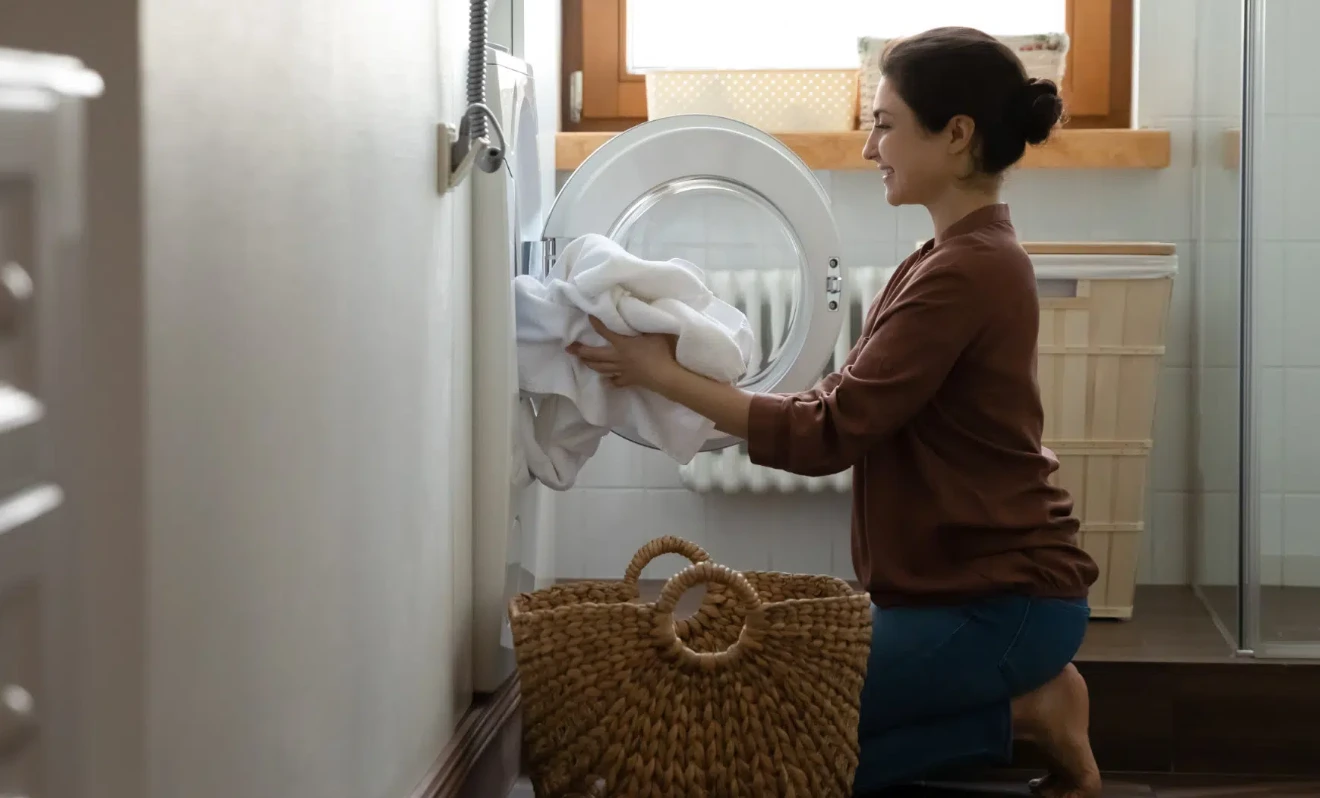Dryers, despite their robust design, can encounter operational issues over time.
Amana dryers, while known for their quality, are no exception. This comprehensive guide focuses on troubleshooting four common problems encountered with Amana dryers, providing step-by-step solutions to get your appliance back in working order.
Addressing these issues promptly is crucial, as a malfunctioning dryer can pose safety risks.
Quick Overview
Some common Amana dryer problems to troubleshoot include: a machine that won’t turn on, won’t dry your clothes successfully, make abnormal noises, and overheating. A malfunctioning dryer can be pretty hazardous, so be sure to troubleshoot yours at the earliest sign of a problem.
1) What Would Cause An Amana Dryer Not To Turn On?
Parts to Check: A non-responsive Amana dryer typically indicates a power supply problem. The investigation should focus on the following:
- The power cord and plug of the dryer
- The wall socket where the dryer is plugged in
- The circuit breakers that protect the wall socket
The electrical current supplying your Amana dryer must travel through these three components. A malfunction in any of them can disrupt the power flow, preventing the dryer from turning on.
How Failure Happens: Each of these power supply components can fail in distinct ways:
- The power cord can become damaged with rips, tears, or holes, interrupting the electrical connection.
- The wall socket might have internal faults, such as a short circuit caused by a power surge.
- The circuit breakers designed to safeguard the wall socket and its circuit could have tripped, intentionally cutting off the power supply to the dryer.
How to Resolve It: Resolving this issue requires identifying and addressing the specific power supply problem:
- Replace the power cord if it shows any signs of damage.
- A faulty wall socket requires the expertise of a qualified electrician. DIY repair is strongly discouraged due to safety concerns.
- Reset any tripped circuit breakers by first switching them to the OFF position and then back to the ON position.
2) Why Is My Amana Dryer Not Drying My Clothes?
Parts to Check: If your Amana dryer isn’t drying clothes effectively, the problem usually stems from insufficient heat, restricted airflow, or a combination of both. The key components to inspect are:
- The heating element
- The lint filter
- The dryer venting ducts
How Failure Happens: Effective drying requires both adequate heat and proper airflow. Problems arise when:
- The heating element’s coils are broken. Damaged coils will not generate sufficient heat to dry clothes.
- Airflow is restricted. Moisture becomes trapped within the dryer, leaving clothes damp. A dirty lint trap or clogged venting ducts will impede airflow.
How to Resolve It:
- A damaged heating element cannot be repaired and must be replaced with a new one compatible with your Amana dryer model.
- Restricted airflow is typically easier to fix. Clean the lint trap thoroughly and vacuum any lint or debris from the venting ducts.
3) Why Is My Amana Dryer Making Noise?
Parts to Check: Unusual noises from an Amana dryer often indicate worn-out moving parts or the presence of foreign objects. Focus your attention on:
- Foreign objects trapped inside the dryer, particularly between the drum and the frame.
- The drum glides, bearings, and rollers.
How Failure Happens:
- Foreign objects, such as hairpins or coins, can fall out of clothing pockets during the drying cycle and become lodged in small gaps, creating grinding noises.
- Drum glides, bearings, and rollers, designed to support the drum’s rotation, can wear out over time, causing grinding or squealing sounds.
How to Resolve It:
- Remove any foreign objects found inside the dryer.
- Replace worn drum glides, bearings, and rollers with new ones.
4) What Causes An Amana Dryer To Overheat?
Parts to Check: Overheating in an Amana dryer is usually caused by restricted airflow. Inspect the following components:
- The lint trap
- The dryer’s internal and external ducts
- The external vent and its flap
How Failure Happens: Clogs, primarily composed of lint, dirt, and debris, accumulate over time in the airflow pathways. These blockages impede airflow, causing heat to build up inside the dryer.
How to Resolve It:
- Clean all components involved in the airflow process, starting with the lint trap.
- Remove the dryer’s rear panel to access and clean the internal air ducts.
- Clean the external ducts.
- Ensure the external dryer vent is clear of obstructions, including the vent flap.
FAQs
Q: How Long Should An Amana Dryer Last?
A well-maintained Amana dryer can last for 10 years or more. However, as it ages, more frequent repairs and part replacements are to be expected.
Q: Is It Worth Repairing A 10-Year-Old Dryer?
Repairing a 10-year-old dryer is worthwhile if the repair is minor and inexpensive. However, costly repairs might justify investing in a new, more efficient model.
Q: Can I Fix My Dryer Myself?
Some dryer repairs can be done DIY. However, if you lack the necessary tools, skills, or experience, it’s advisable to hire a qualified technician.
Q: How Can You Tell If Your Dryer Is Going Out?
Frequent malfunctions and component failures indicate that a dryer is nearing the end of its lifespan.
Q: Is It Better To Fix A Dryer Or Buy A New One?
This depends on the dryer’s age and the cost of repairs. If the dryer is over 10 years old and the repairs are substantial, a new dryer might be a more sensible investment.

Abdul Kader, a handy guy and experienced founder of a TV repair shop in Gulshan, Dhaka, Bangladesh. He is mainly an expert in understanding and repairing different types of issues with Smart TVs and providing helpful insights on how to keep them in good working order. Read his Full Story.

